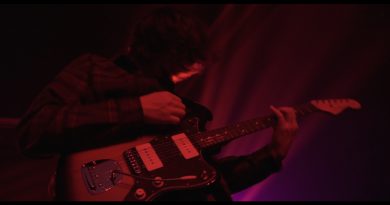HvZ Takes Over Campus
That time of year is upon us again. The trees are turning green, the flowers are in bloom, and the undead are rising and reeking havoc on campus.
Humans vs. Zombies kicked off on Sunday night at the stroke of midnight, with almost 100 students signed up.
“You get a lot of different people with a lot of different backgrounds, ” said game moderator Josh Green. “Many people that normally wouldn’t hang out together, but all of a sudden, they’re in a zombie hoard together.”
All players start off as humans and are identified by an orange bandana around their arm. There are 2 original zombies (OZ’s) that masquerade as humans for the first day. If a human is tagged by an OZ, they transition into a zombie.
Zombies must tag a human to “kill” them, and humans may defend themselves by stunning the zombies, either with Nerf guns or by throwing socks at them. Once a zombie has devoured a human, the “kill” is registered on hvzsource.com, by identifying the former human’s unique code he or she was given upon registration. The website keeps track and alerts players as to who is a human, a zombie, and who is deceased.
“The first day, probably,” said Alex Lane, when asked about what the hardest part of the game was. “You don’t trust anyone.”
Throughout the course of the 4-day game, players can be seen darting quickly to and from academic buildings and dorms. Human players are constantly on the look-out for zombies to pop out and tag them. Spectators can often look out their bedroom windows, glance out of the cafeteria windows, or gawk from Java and see stand-offs and run-downs.
Players will often take obscure routes to class to avoid passing a hungry zombie. Students recall previous years when some players were rumored to have camped out in trees and slept in their cars to avoid getting tagged. Each player has a different strategy for staying alive, or making sure that other people don’t.
“I’ve been bluffing that I’ve been an OZ all day so people would stay away from me,” said Lane. “And it’s working.”
The game has a couple of rules, to keep the peace somewhat intact. The game is only played outside so the inside of buildings are all dead zones. If a zombie is struck, they are stunned for 10-15 minutes and cannot “feed”. If a human is tagged by a zombie, they will fully transition into a zombie within 60 minutes. The game is only played on USF’s campus; zombies are not allowed to “feed” off campus.
Zombies must “kill” a human every 24 hours or they will starve and be out of the game. A zombie can share his or her captured human with two friends, as humans are often much too big to eat by oneself. Green said that it’s quite the community-building activity.
“All of a sudden they’re working together and creating community that normally doesn’t necessarily happen between different kinds of people,” said Green.
During the week, there will be a series of nightly missions where humans will have the opportunity to earn bonus items and perks, such as free passes and immunity from zombie bites. Zombies use the missions as feeding time. Monday night featured the 2015 game’s first mission. Humans had to find supplies inside the academic buildings and safely bring them back to home base without getting attacked by a zombie.
“We got all the things we needed,” said Wes Theis, a human player. “Some hardware, food, and supplies to survive the rest of the apocalypse.”
The game will continue until April 23rd. Campus life will resume as normal, until next spring, when the undead will roam the campus once again.


